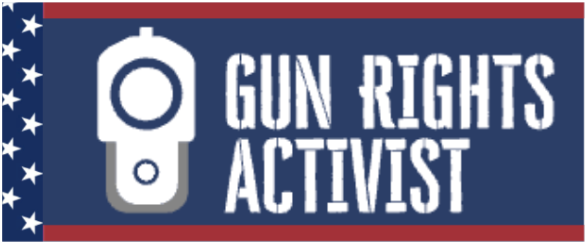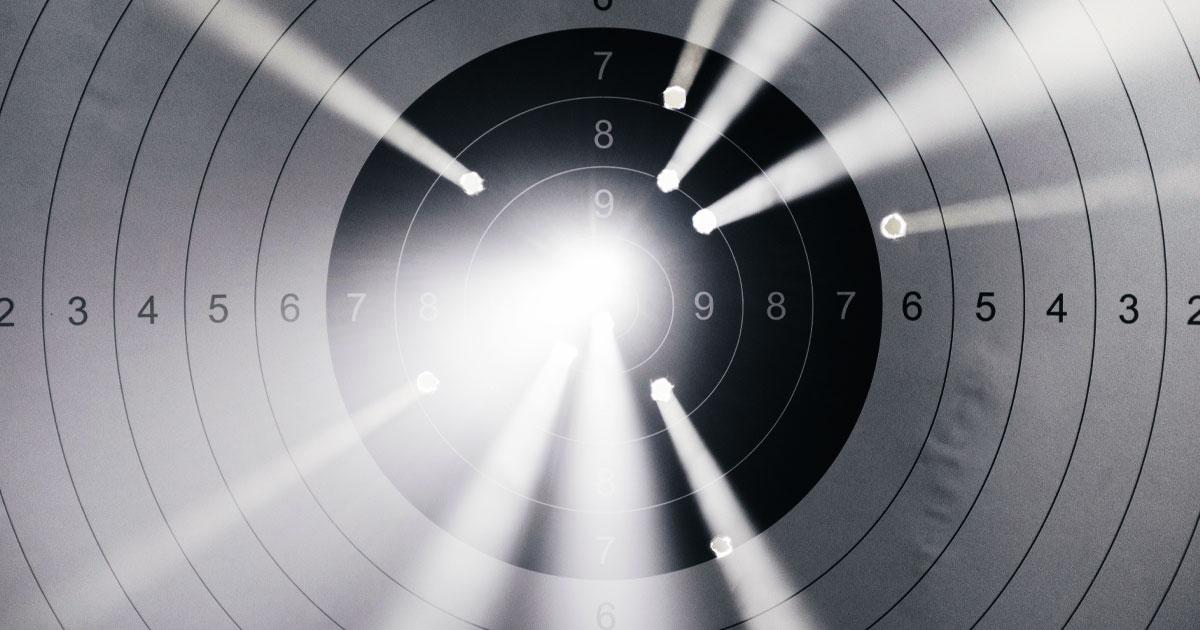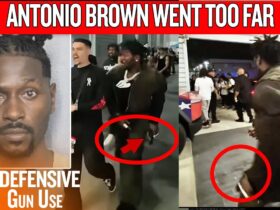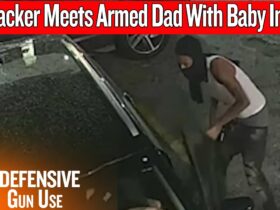Listed To This Article: Play in new window | Download | Embed
You can also subscribe via Apple Podcasts | Spotify | Amazon Music | Android | | More
How confident are you that you will be able to shoot accurately and quickly stop an assailant who has surprised you and already has a gun in their hand? What if they are already shooting at you? How about if they are charging at you with a knife? What if there is a family member or other innocent person partially blocking your view of the bad guy? These are questions we should all ask before we sit back and tell ourselves our accuracy with our handgun is ‘good enough’ for defensive shootings.
Anatomy of a Self-Defense Shooting
According to statistics collected by the FBI, most police shootings occur at a range of three to six feet, consist of 2 to 3 shots fired, and last about 3 seconds. This gives many people the opinion that being able to draw and get off a couple of close-range shots that hit the bad guy is plenty good enough. But is it? In July 2022, Elisjsha Dicken saw a man open up with an AR rifle in a mall food court, immediately killing 3 people and wounding 2 more. Fifteen seconds after the shooter fired his first shot, Dicken drew and started shooting at a range of 40 yards with a Glock 19. He had to pause several times as panicked bystanders ran across his line of sight. He fired a total of 10 shots, striking the shooter 8 times and killing him. The shooter managed to return fire at Dicken once, missing him. The gunfight took around a minute and a half. That’s a long time when the lead is flying, believe me. It takes better than average accuracy to shoot a rifle-wielding psycho at 40 yards without hitting the screaming people running back and forth between you and him. “Most” is not “all,” and it is a mistake to assume your gunfight will fit some set of statistical averages.
What Do You Need to Do to Survive?
The only safe assumption we should make is that we will be behind the power curve and forced to react to our assailant. We will not know for sure if there is an actual threat until after he acts. That means we must train for the worst-case scenario so we are prepared and do not get rattled when things go south. Go far beyond what you think is good enough. Here is some food for thought:
You have about an 85% chance of being hit if you are standing still, like you are when shooting on a static range. If you are moving, your chance of being hit goes down to around 47%. If you are using cover and returning fire, the chances of being shot drop to around 26%. Elisjsha Dicken took cover behind a pillar and rested his arms on the top of a tall trash receptacle as he engaged the mall shooter. Those numbers alone should tell you that being able to put five shots into the black ring at 7 yards on a static range is not good enough.
Wild Cards
Criminals do not follow any rules except to maximize everything in their favor. That means you may suddenly find yourself faced with some wild cards you did not anticipate, and that a day at the indoor range did not prepare you for.
Range
The Armed Citizens’ Legal Defense Network reports that the ranges in civilian defensive situations are usually between 3 and 15 feet, especially in a home invasion or an assault in a store or gas station. But usually it is not the same as always, and averages are just that – an average. Ranges can vary from point blank to forty or fifty yards, and you should be training to be accurate at both ends of the spectrum, including while moving.
Poor Visibility
About 60% of civilian shootings occur during darkness, most often between the hours of 6 PM and 2 AM. Many of those involve people who are either looking for trouble, dealing drugs, or going to places they shouldn’t go to, so the figure for innocent citizens being assaulted could be lower. Nevertheless, it is safe to say there is probably a 50-50 chance that if you are assaulted by an armed criminal, it will be in conditions of poor visibility.
How Your Opponent is Armed
Most people are shot with a 9mm, but there are all kinds of guns in the hands of criminals and crazies. Many of these shoot 5.56 NATO and 7.62×39, both of which have longer range than a handgun. Police began carrying rifles in their cars because they frequently found themselves outgunned by the criminals. An armed citizen could find themselves in the same situation, especially in the case of an active shooter.
Multiple Attackers
According to the Bureau of Justice Statistics (BJS) National Crime Victimization Survey, about 20-25% of violent crimes (sexual assault, robbery, aggravated assault, etc.) involved multiple offenders. That means that if you are the victim of a violent crime, there is around a 25% chance you will be outnumbered.
You Are Wounded
People get shot in gunfights. I have seen people who were shot, and even a noncritical wound in the arm or leg will impact your ability to fight back. A leg or hip wound could immobilize you, and an arm or shoulder wound could mean you must shoot one-handed, perhaps even with your off hand. Even minor scalp wounds bleed copiously, which could affect your vision.
Realistic Practice Goals
To prepare to shoot accurately under adverse conditions, training must be varied and intense. Critical self-defense shooting skills closely match the IDPA competition classification qualifiers. For those who are not familiar with it, IDPA stands for International Defensive Pistol Association. These skills can be practiced at outdoor ranges that allow shooting from the draw, which I call a dynamic range, but will be difficult to practice on the usual indoor range that requires you to shoot down a lane while standing still. If you don’t have access to a dynamic range, you can practice in your home or yard using dry fire, laser trainers, or even airsoft pistols.
Draw the Pistol
Unlike shooting on an indoor range, it is unlikely you will have your gun in your hand when you need it. You need to be able to instinctively clear your cover garment, get a good grip on your gun, and draw it cleanly from your holster.
Extend to Fire
This is getting the gun aligned with your target. That may mean extending your arms for targets beyond arm’s length or holding your gun more tightly against your body in a protected stance if your target is very close to you.
Execute Precise Shots
When we shoot on a range, we have plenty of time to stand still, get a good sight picture, and squeeze the trigger. That will not be the case in a defensive shooting. We will be rushed, and the other guy may already be shooting at us. Under these circumstances, it’s often better to focus on the target and not the sights, but that takes practice.
Transition Between Targets
Since there is a chance there will be more than one bad guy, and they may all be armed, it is critical to be able to transition from one target to another quickly. Start with two and work your way up to three or four.
Shoot Unsupported with Either Hand
Shooting one-handed is very different from shooting with a solid two-handed grip. It takes practice, especially with your off-hand.
Move While Shooting
Everyone knows a stationary target is easier to hit than a moving one. Don’t give the bad guy any more of an advantage than he already has. Learn to shoot while moving.
Summary
You hear and read all kinds of things at ranges and on gun forums. Some, like ‘if you can’t do it with one shot, you can’t do it at all,’ are just hot air. Others, like people saying defensive encounters occur at three feet or that only three shots are fired, are true to a point, but they do not consider all the possibilities. Personally, I choose not to stake my life on something called the “average encounter.” I would rather do the extra work to ensure I beat the average.
Read the full article here







Leave a Reply